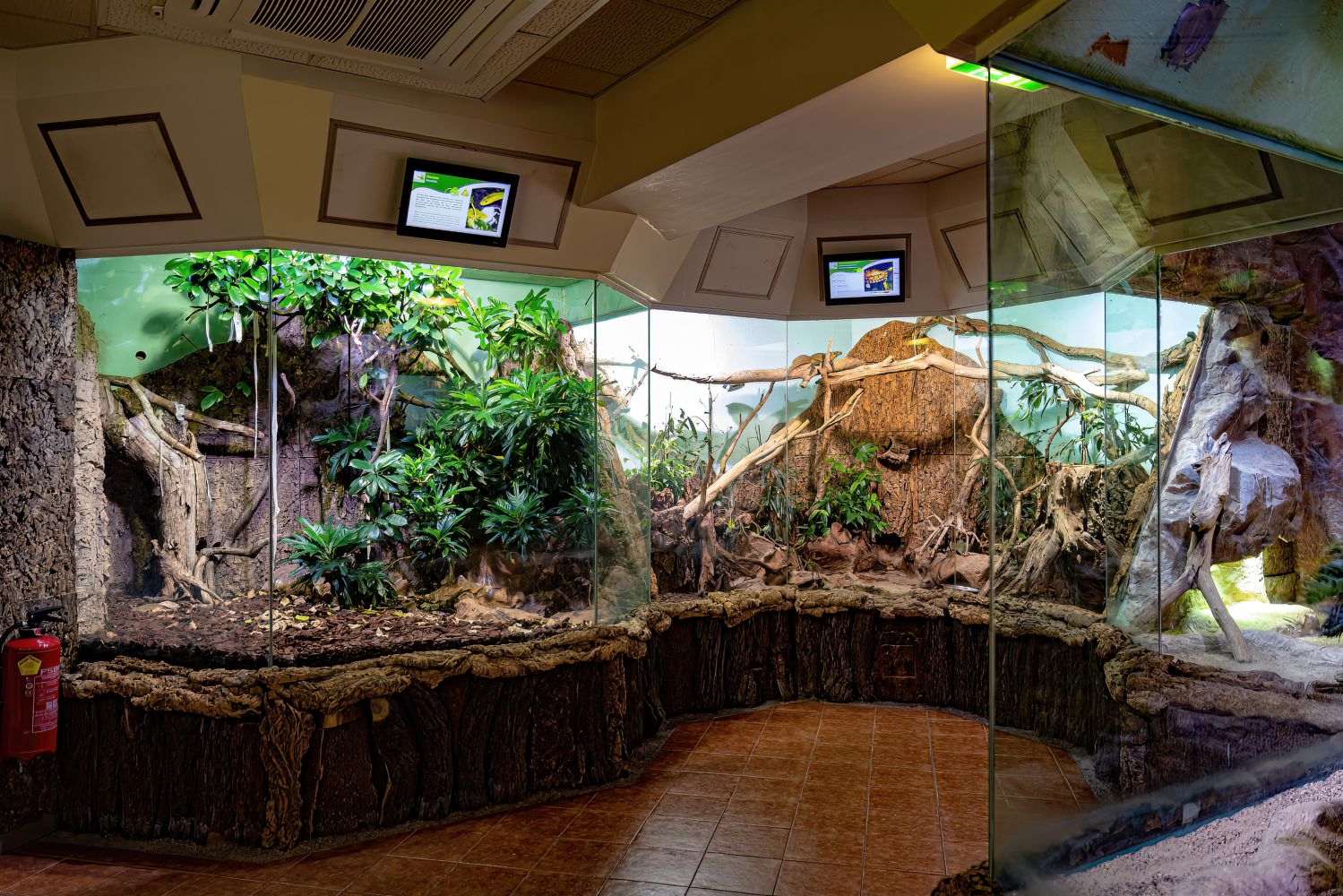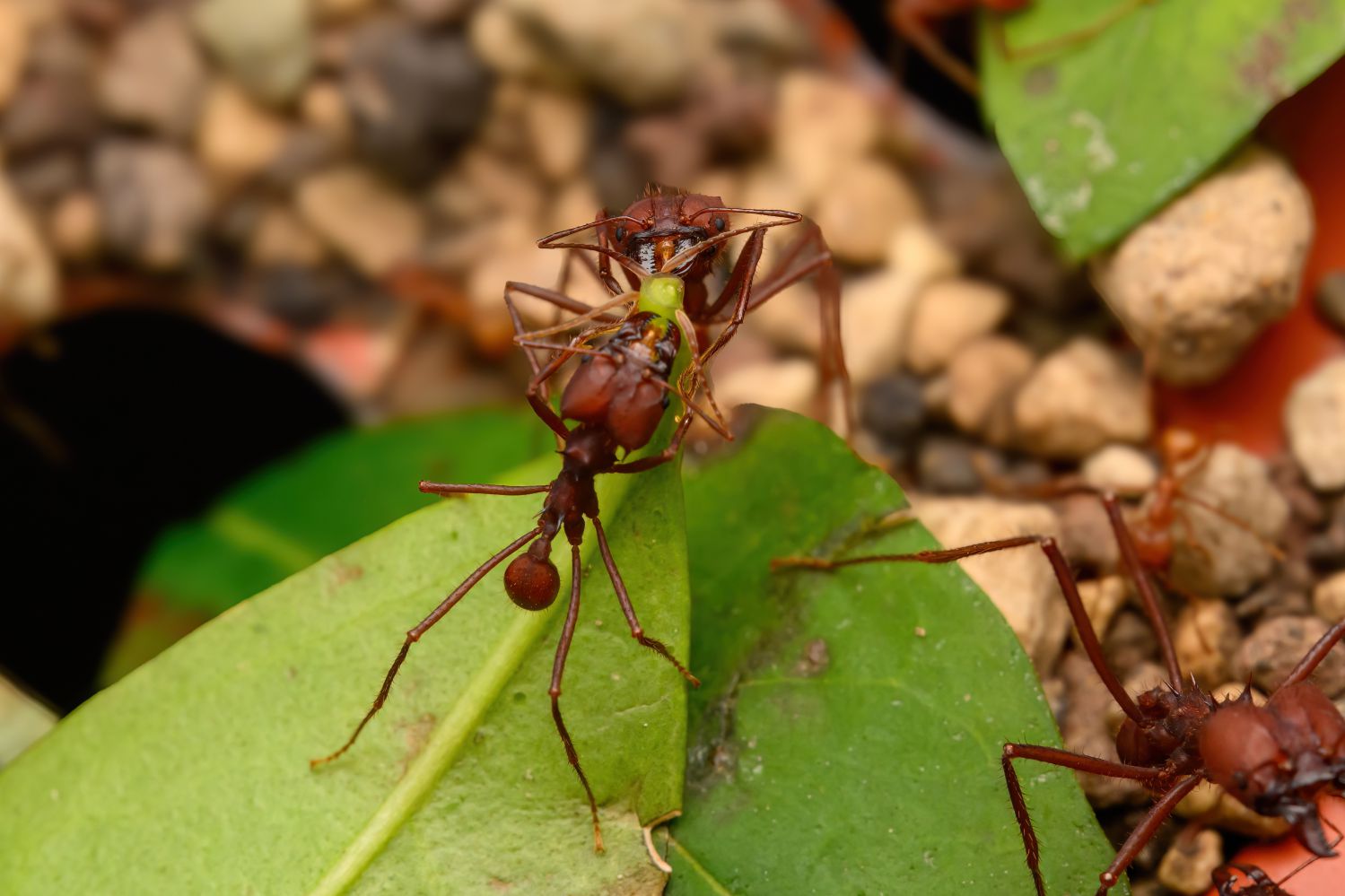Floor 1
Snakes, lizards, and a moving street await you on the 1st level of our zoo!
We begin our tour at the giant snakes. This group, also known as constrictors (non-venomous! – all boa and python species), includes the longest snakes in the world: the Asian reticulated python and a boa, the anaconda. We also have albino tiger pythons, which have a special light colouring due to a pigment disorder.
The tour continues with the elapid/venomous snakes: After nearly a year of renovations, the state-of-the-art reptile section reopened in March 2025, with our zoo setting a new benchmark in reptile care. Five spacious, naturally designed terrariums – spanning a total area of 32 square meters – allow visitors to observe some of the world's most fascinating and dangerous snake species. From cobras and mambas to rattlesnakes, puff adders, and the inland taipan (the world's most venomous snake), this new exhibit offers a unique glimpse into the lives of these remarkable creatures.
Venomous snakes evoke a mix of fascination and fear. The Haus des Meeres aims not to instill fear but to educate through this exhibit. Of the roughly 3,900 snake species worldwide, about 600 are venomous. Their venom primarily aids in hunting and digestion but also serves as defense. Despite their dangerous reputation, snakes rarely pose an immediate threat to humans. Instead, they play a vital role in healthy ecosystems by regulating pests and maintaining natural balance.
The exhibit’s design enhances the experience: anti-reflective glass blurs the line between visitors and snakes, creating an immersive encounter. This allows for close observation of the snakes’ graceful movements and unique survival strategies.
Probably the longest ant trail in the world with a total length of approx. 70 m begins on level 1. It extends over two floors and can also be seen in the Krokipark (level 2) – a unique experience to watch the hard-working animals!
But that was not all! Also on the 1st floor: spotted monitor lizards and rhinoceros iguanas. Originally, monitor lizards called the tropics of Australia their home. A special feature of the coloured monitor is a rarely occurring colour mutation, the so-called “Bell’s phase”. Instead of the usual many pale-yellow spots, these animals have a broad yellow banding on the dark basic body colour. We are particularly pleased that we are one of the few zoos that can show our visitors this rare variant of the colourful monitor lizard. Rhinoceros iguanas are peaceful herbivores that are critically endangered in their native Hispaniola. Like all iguanas, they are equipped with powerful claws and teeth. They live in dry, rocky areas, steppes, and light forests, move mainly on the ground, but also climb trees from time to time.





